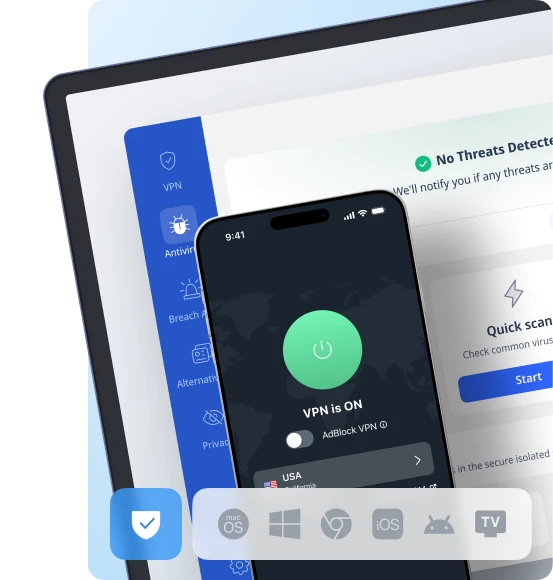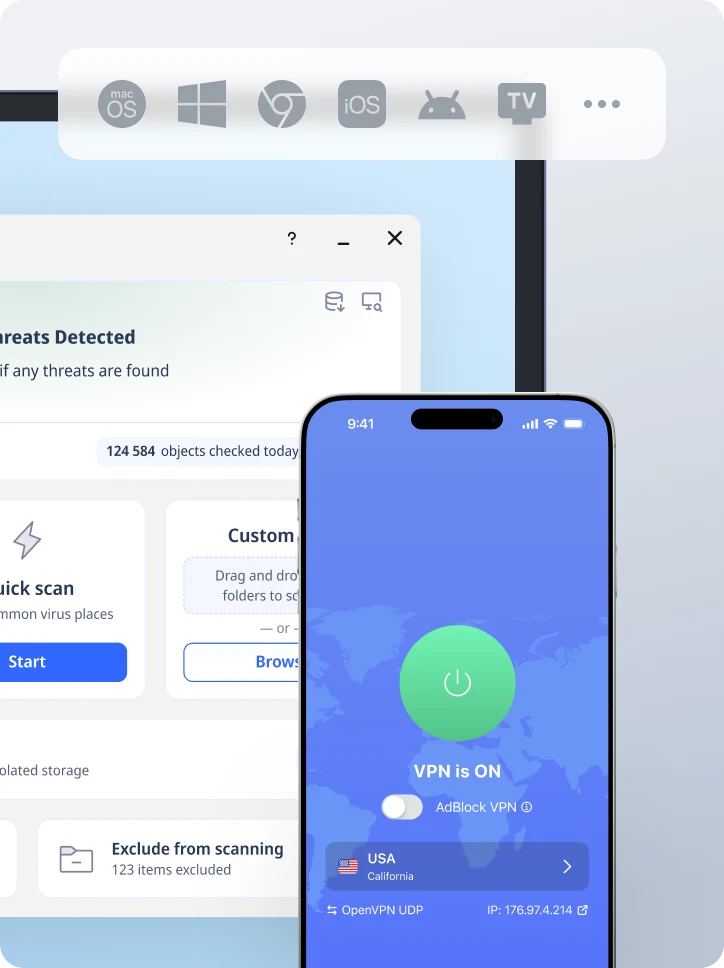How To Tell If Someone Hacked Your Router
Your home WiFi should be your safe haven to the Internet, but what if it’s not? With cyber threats evolving fast, even your router can get hacked. A compromised router can expose everything from your browsing activity to personal info. In this guide, we’ll show you the signs of router hacking, the dangers it brings and what to do. Plus we’ll show you how VeePN can add an extra layer of protection to your digital life.

Start strong: Secure with VeePN
Before we get into the signs of a hacked router, let’s talk about the importance of strong digital security. Here’s how VeePN can help:
- Encrypts your traffic to prevent data theft and spying
- Masks your IP address to keep your online identity anonymous
- Protects all your devices from unwanted surveillance
- Shields your online activity from cybercriminals, ISPs, and snoopers
Whether your router is vulnerable or not, VeePN ensures your internet use remains private and secure. Install VeePN today and start browsing with confidence.
Why router security matters
Your digital life is centred in your home WiFi network where you connect all your devices to the Internet. However, when your router security is fragile, cybercriminals will find it easy to attack it. An infected router does not only affect your internet speed; it may endanger all the devices in your wireless network. Hackers can illegally access the information and plant malware, as well as access your connected devices to their own use, whether it is to steal your personal data or even attack other networks. That is why hacking routers is a rather dangerous issue: it can make your home WiFi network a platform of malevolent acts, endangering your privacy, wealth, and mental health. The best place to start guarding your entire home network against these threats is by taking router security seriously.
Unusual signs your router might be hacked
These are the red flags:
🚩Unidentified gadgets on your network: When you notice an unfamiliar gadget or on your device list, it is an indication that an unauthorized party has access.
🚩Slower Internet connections: The Internet connection speed reduces noticeably, particularly during off-peak times, and this might be a piggybacker on your connection. The slow internet speed may also be an indication of illegal users or malware using your network.
🚩Higher data consumption: Sudden peaks in data consumption may be due to unauthorized access, including an individual accessing your network to indulge in illegal downloads, or viruses contacting foreign servers.
🚩Alterations in configuration of the router: alterations in the setting of the firewall, DNS servers, or passwords of the administrator took place without your approval is a huge indication. Tampered or disabled security (such as firewalls) or other changes to your router settings may be detected in case someone has accessed your router without authorization.
🚩Odd web browser behavior: Pop-ups, redirects and odd ads might be DNS hijacking by an attacker.
🚩Disconnection: Your devices constantly lose WiFi connection, which may be an outside interference or hacking.
The risks of a hacked router
Once a hacker gets into your router, they can:
- Monitor your Internet activity
- Redirect you to phishing websites
- Install malware on connected devices
- Cause malware infections across your network
- Steal sensitive info like login credentials and financial data
- Launch attacks on other devices within your network
This makes your entire home network and in fact, your entire network a target. A compromised router can threaten the security of your entire network, not just individual devices. The consequences can range from annoying interruptions to identity theft and financial loss.
How to check if your router was hacked
You can confirm a breach through:
🔎Access your router’s web interface: Login to your router’s web interface to review connected devices and the router’s settings. Check the admin settings and router’s admin settings for unauthorized changes. Review the MAC address of each connected device to identify any unfamiliar or unauthorized devices. Also, inspect the router’s DNS settings and domain name system configurations for suspicious changes.
🔎Run a scan: Use security software to scan all devices.
🔎Check your logs: Some routers keep logs of admin access and changes check these for suspicious activity.
What to do if your router was hacked
If you think your router has been hacked, act fast:
- Disconnect from the Internet. Unplug your standalone router or disconnect the ethernet cable or ethernet cord to stop hackers from controlling your network remotely.
- Reset your router to factory settings. Performing a factory reset will remove malicious configurations and restore default settings, helping to eliminate any changes made by those who gained unauthorized access.
- Update the router’s firmware to the latest firmware version. Regular firmware updates are essential to patch firmware vulnerabilities and protect against future attacks. Enable automatic firmware updates or automatic updates for your router’s software if available, as many routers and most routers support this feature.
- Change all login credentials for your router and online accounts. Change the admin password, router’s admin username, and router’s admin credentials. Avoid using default credentials, and use a password manager to generate and store strong, unique passwords.
- Secure your WiFi with strong encryption (WPA3 if available). Change your WiFi network name (service set identifier/SSID) and Wi-Fi password to prevent hackers from trying to gain access again. Make sure your wi fi router or wireless router is protected.
- Disable remote access and remote management features on your router to prevent hackers from attempting to gain remote access or control your network remotely.
- Check and re-enable your router’s firewall and other security features after a reset to ensure your network is protected.
- Check your public IP address and contact your internet provider or internet service provider if you suspect ongoing issues or see suspicious activity.
- Install a trusted VPN like VeePN.
- Use antivirus software to scan all devices for malware and remove any threats.
By following these steps, you can secure your wi fi network and protect your devices from further attacks.
Pro tips to prevent router hacking
✅Default usernames and default passwords should never be used. The default username and passwords on most of the routers can easily be guessed by hackers. Adjust these as soon as you have set up. A password manager will help you create and save strong unique passwords to your router and other accounts.
✅Upgrade your router firmware on a regular basis. Hackers can take control of your router through its firmware vulnerabilities and software vulnerabilities. A lot of routers have the capacity to automatically update firmware and automatic update: turn these features on in case they are available to maintain your device safe.
✅Turn off remote controls. The majority of routers are set up either to have remote access disabled or enabled. Turn off unwanted remote management to minimize chances of unauthorized remote intrusion.
✅Have a long and complicated WiFi password. A good password keeps off strangers who may connect to your network.
✅Install a guest network of visitors. This makes your core network a bit more secure because they isolate guest devices.
✅Check the manual of your router to get dedicated instructions about how to secure your device, e.g. find the reset button or activate advanced security settings.
✅Check the software vulnerability and firmware vulnerability regularly and apply patches as they are released.
✅Activate firewall and other security features of your router to assist in preventing any unauthorized accesses and detecting tampering.
✅Invest in antivirus software to detect and eliminate malware, as well as prevent the current and future cyber threats by installing and updating the software to all connected devices.
Protecting your home WiFi network
The first step in securing your home WiFi is securing your router with admin credentials. Change any default log-in information instantly so the hackers do not find it simple to access the settings of your router. Then, make sure that WPA3 encryption is enabled in case it is supported by your router. This is the most solid protection of your internet traffic and will help to keep your data out of the prying eyes. Ensure you update the firmware of your router regularly to seal the security holes that may be used by attackers.
Another smart step is to create a guest network; this will isolate visitors to the network and their devices, so in case of any threat, it will not be able to infect your connected devices. To provide added security, turn off WiFi Protected Setup (WPS) and remote access, which are the most popular attack points of hackers. This is the way that you can make sure that your home WiFi network, as well as the rest of the devices connected to it, will not be accessed by unauthorized users and will not fall prey to router hacking.
Why VeePN is your router’s BFF
Router security is a matter of concern, but with VeePN, there is an additional measure. VeePN secures your whole network at home as it has more than 2,500 servers in 89 locations, allows having up to 10 devices connected to a single account, and uses military-grade AES-256 encryption. In addition, Plus VeePN ensures that your Internet Service Provider (ISP) cannot monitor your activity and protects your personal information on any device you use.
Stay safe, stay private
The hacked router is a problem that goes beyond technology, it is a crisis of privacy. With the knowledge of the signs, the speed with which you act and the VeePN protection of your devices you can take control of your network and browse without worries.
Do not be late, protect your router and your digital life using VeePN.
VeePN is freedom
Download VeePN Client for All Platforms
Enjoy a smooth VPN experience anywhere, anytime. No matter the device you have — phone or laptop, tablet or router — VeePN’s next-gen data protection and ultra-fast speeds will cover all of them.
Download for PC Download for Mac IOS and Android App
IOS and Android App
Want secure browsing while reading this?
See the difference for yourself - Try VeePN PRO for 3-days for $1, no risk, no pressure.
Start My $1 TrialThen VeePN PRO 1-year plan







